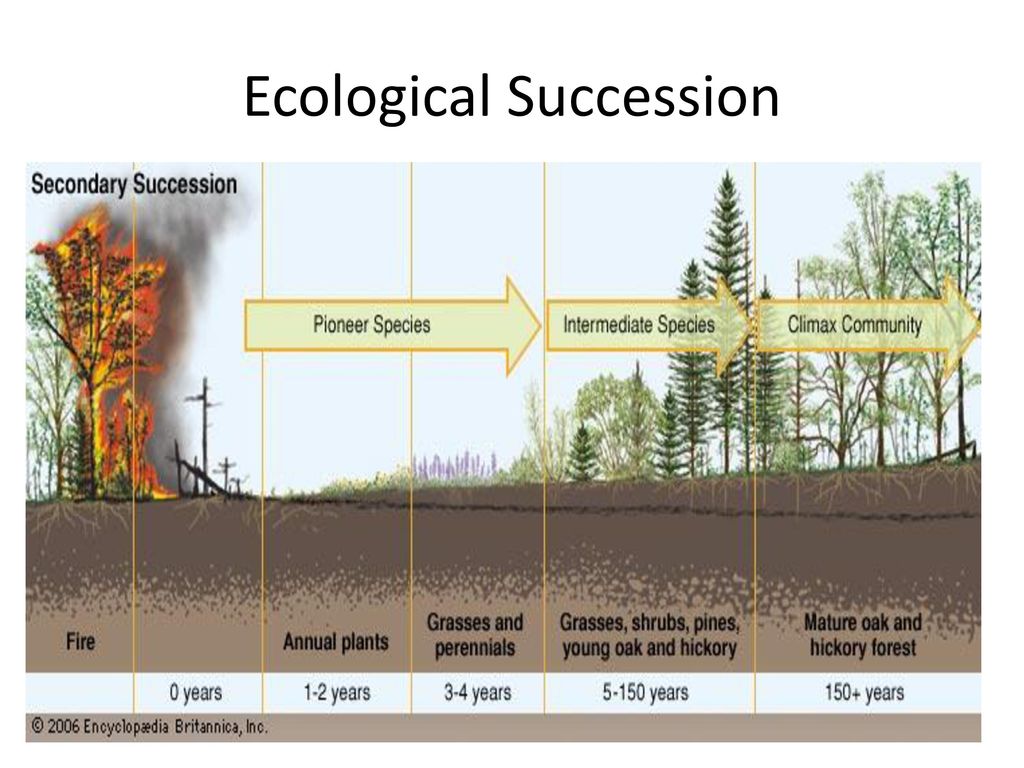It seems like every summer now there is a massive
forest fire somewhere in North America. It always irks me a little that people think that the reason
forest fires are becoming more frequent because of climate change. So I'm going to give a simplified explanation (that hopefully everyone, of all education levels will understand) to set the record straight. First, you need to understand two concepts; ecological succession, and the intermediate disturbance hypothesis.

After a
fire burns through an area, the first thing to grow back are the grasses. Grass can quickly grow back, so they are the first thing to spring up. After a while, the grasses are overtaken by small shrubs. The shrubs can push the grasses out of the way to grow. But the shrubs are out-competed by bushes, which grow even bigger, and cover a larger area. The shade-intolerant trees come next (they need lots of sunlight to grow). They grow bigger than the bushes and block out the sun. The shade-intolerant trees get out-competed by the shade-tolerant trees, because they can grow in the shadows of the other trees, and eventually grow bigger, leading to a mature
forest. The ideal
forest right?
Nope, not at all.
You see, the mature
forest keeps growing, and the trees keep competing for space, and one species eventually comes out on top. They
conquer the entire
forest area, creating a monoculture.

This is trouble for animal species, because many of them need a variety of plants, not just pine trees. Beavers use small aspen trees for dams. Deer and other ungulates eat from bushes and grasses.
There is this weird notion of a "
Balance of Nature", that things must stay the same, and this is absolutely false. Nature is chaotic and ever-shifting. The world we know now is not the same one from 1000 years ago. New species diverge, and old species go extinct. Always changing, which leads to the next topic.
Intermediate Disturbance Hypothesis
A healthy ecosystem should have a large variety of species. This causes the system to be more resilient to disasters, and provides more natural resources to humans. So how do you get this? This hypothesis states that you need an intermediate number of disasters. Too few, and ecological succession leads to monocultures of one species. Too many disturbances, and you also get a monoculture. I couldn't find the exact quote, but one of the first expeditions that came back from the Canadian prairie had one of it's members comment "Oh my God, there are so many fucking fires." Because brush-fires are so frequent, the only thing that can grow back fast enough are grasses. What you want, is an intermediate number of disturbance; not so much that you only have grasses, but not so few that it's only trees. In this picture, you can see grasses, shrubs, bushes, trees, a wide variety of species. This is because fires don't come super often, and they aren't rare events. There are sections of this
forest at different stages of succession. This is called a shifting mosaic.

One thing very important. Tell everyone you know. Tell your parents, your friends, eco-warriors, and the kids at summer camp.
Smokey the Bear is a liar and a traitor.
This is the great irony.
Forest fire prevention is what's causing these massive forest fires. Now I have your attention. Think about it; if you always stop a
fire, then you're creating a situation with low disturbances. This causes the shade-tolerant trees (pines) to out-compete the entire
forest. Pine trees have resin in them; it's very flammable. Also, the litter builds up. Pine needles and leaves build up at the base of trees. If you've ever lived on a farm with cows or horses you might be aware of this danger. It gets really hot underneath all that dead
plant material, until it combusts. Spontaneously. And then your barn burns down. Or in this case, the barn, your house, and the entire
forest around it. It's all pine trees and needles, so the
fire gets out of control very quickly. It happens every year.

So the solution is now controlled prevention. Don't stop all the fires, just the ones that get close to people. In some places (mostly national parks) the park rangers and keepers need to start the fires. Firebreaks (pictured above) control how far the fires burn. With controlled
fire management (instead of all-out
fire prevention), the
forest becomes a shifting mosaic with high species diversity, and much less flammable trees.